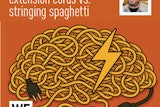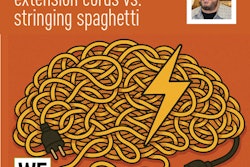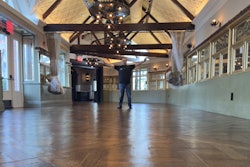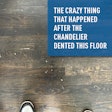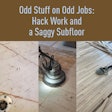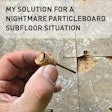
We talk about it at the NWFA classes, read about it in the magazine, and it is real clear in the manufacturers’ instructions, but here is a good example of not doing it right:
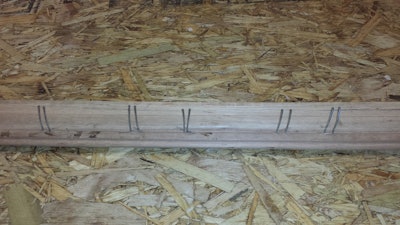

With a 2¼-inch board what is the correct nail pattern? Every 8-10 inches is correct, but this floor person got gun happy. What are the problems with over-nailing a floor?
The floor is going to move with seasonal change, and this will not allow the movement without damage to the tongue. When this board grows in the humid season, it will pull the tongue and split the flooring. This is a Rice Krispie floor now—snap, crackle, pop—and it won’t stop. The holding power of the fasteners won’t allow the flooring to do what it is going to do, and something has to give.
This floor may gather together, as some tight boards won’t move with the loose boards and will look as if the boards are glued together. The look of this is ugly and stands out real bad.
Gaps can become permanent in the floor system because once it moves and there is damage to the tongue, it cannot move back fully. The split tongue will not allow the flooring to relax back now that it is pushing the groove, not engaging into the back of the next board.
Now let me get on my soap box about OSB and holding power. It’s a big topic and at this point, I do not have the “science “ to give it a “like” or dislike as our Facebook friends would say. It comes down to this for me:
1. Thickness: We see 19/32 on 16” beams all the time. It should be 23/32 on 16” centers and 7/8 on 19” centers. The floor flex will pull and tug on the nails/staples.
2. Moisture in the OSB at the time of install: This is HUGE because if it is high and the flooring is installed, as the OSB dries the hole around the nail/staple with get larger and allow the fasteners to become loose.
3. The seam will grow and the boards will lift up in the life cycle of the flooring. This will push up on the flooring and pull on the nails/staples. This makes for a Rice Krispie floor as well as any damage to the tongue from over-nailing.
4. I use a 1¾ nail or staple on most of my installs. Why? Well, thanks for asking. Have you seen the bottom of an OSB subfloor where the fastener has blown out a big flake of the OSB subfloor? I have, and when it does that it has no holding power. The short nail reduces the blow-out of the OSB, as it does not push through the bottom of the OSB.
Now that is just the start of my concerns, and if you are like me, we need not add to the pain of any floor troubles. Don’t over-nail the flooring and do not think that a super tight floor is the best floor. Likewise, an under-nailed floor can give you most of the same troubles. So follow the nail pattern for the size of flooring you are going to install.










